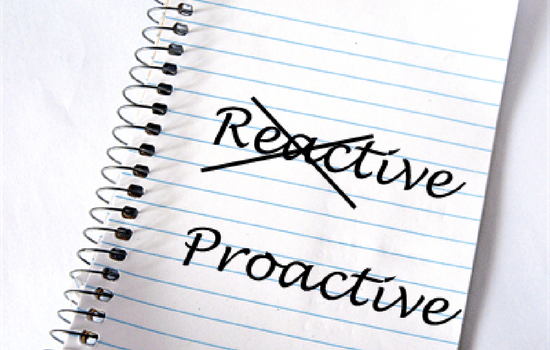Using Lean to Achieve the 7 Habits: No. 1 “Be Proactive”
Originally published on March 25, 2015
Updated on December 16th, 2024
Stephen R. Covey’s “The Seven Habits of Highly Effective People” presents a framework for living with fairness, integrity, honesty, and human dignity – principles that help us embrace change and take control of life’s opportunities. Achieving these goals requires an increased capacity for both change and improvement.
When I think about implementing habits that will result in effective change and improvement, I think about the principles of Lean Six Sigma (“lean”). Lean better prepares individuals and organizations for change by using a proven problem-solving model that is designed to improve quality and eliminate waste in anything you do – a way to do things better. Once the underlying principles of the lean six sigma model are embraced by those that practice lean, these principles expand beyond the application in a business process to the personal habits that are practiced each and every day. These principles go hand-in-hand with Covey’s seven habits.
Covey’s Seven Habits are represented by three imperatives: Independence, Interdependence and Continuous Improvement, and the seven habits fall within these three categories. Over the next several blog posts, we’ll discuss how you can apply lean principles to achieve the Seven Habits of Highly Effective People.
Independence – Be Proactive
Developing independence requires growing and improving enough to move from dependence to a state of freethinking and individualism. In order to effectively obtain the benefits of independence, you must surround yourself around efforts to (1.) Be Proactive, (2.) Begin With the End in Mind, and (3.) Put First Things First.
Covey explains the importance of taking responsibility for your life. Proactive people assume responsibility for their life and actions by focusing their time and energy on things they can control. Reactive people lack control and find external sources to blame for their behavior or inadequacies.
Lean practitioners look inward to see where they can most benefit from change. This is the first step toward leading a more proactive life. This thought process can be applied to your business by listening to the “voice of your customer”, where the “customer” is anyone that values the work that you do and the process steps taken to develop the service or products that your business provides. By proactively making improvements to your service or products based on what the “customer” values, it may be necessary to consider internal changes within yourself or company to bring about the best results. Adopting a proactive mindset will allow you to control circumstances internally by causing something to happen rather than responding to it after it has happened. This proactive mindset is more valuable to yourself and those around you.
Something as seemingly simple as looking for innovative ways to proactively manage waste and utilize time ultimately adds value to yourself, your company and your customers. For example, at James Moore, CPAs, leaders within the company improved the audit and tax process, with the goal of providing the best possible customer service to our clients. The improvements made resulted in an increased bottom line, and improved efficiency and employee morale. By improving the timeliness of financial reporting, the firm’s clients have increased satisfaction, and it allows us to spend our time providing additional value to our clients as trusted advisors.
By applying lean methodologies to achieve independence, you and your company will inevitably become more productive and proactive. In our next blog post, , we’ll discuss Covey’s 2nd habit, Begin with the End in Mind, represented by the Interdependence imperative.
About the Authors
Mike Sibley and Katie Davis are passionate about creating thorough and sustainable systems to help organizations become Lean Enterprises. In addition to writing and speaking on Lean Six Sigma, Mike and Katie work directly with an organization’s members to evaluate an existing process and identify solutions that eliminate waste, as well as build efficiency and quality into the process. Mike and Katie have applied these approaches for manufacturing, construction, professional services, and governmental entities.
Other Posts You Might Like
